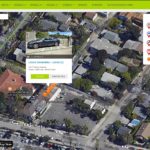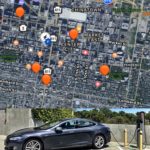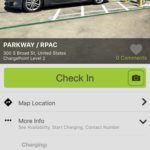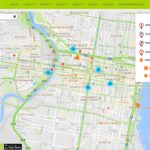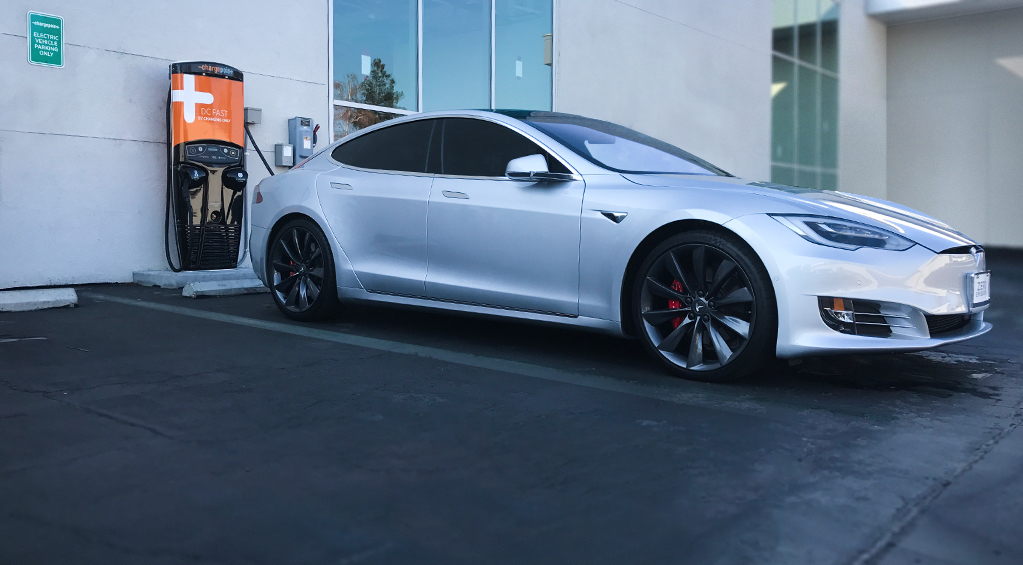
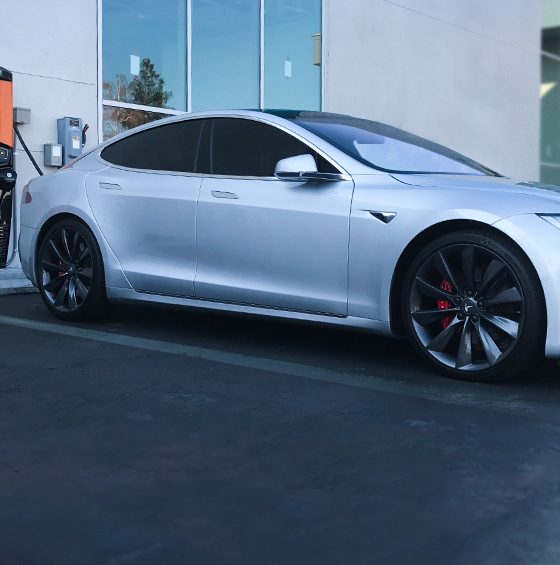
Lifestyle
Tesla drivers add to Supercharging with ChargePoint’s EV charging network
I love California in many more ways than one. Show me a land that seemingly basks in eternal sunshine and is home to arguably one of the most iconic automotive brands in history, Tesla, and I’ll tell you that any Model S owner like myself would be hard-pressed to imagine the Golden State as anything less than a basket of rainbows and unicorns. Except, I don’t live there. And the thought of possibly having to wait in long lines to charge my Tesla frightens me.
I’m a Philly Gal who’s grown used to my electric car lifestyle over the years, and in a region where finding a charging station was once akin to playing a game of Where’s Waldo. We don’t have Tesla Superchargers in every town like our left coast friends (unicorn world). Not to mention that it took a long while before Tesla installed one of their Supercharger stations along the east side of Pennsylvania where I would frequent.
However, Tesla has done a phenomenal job of making long distance and cross-country travel possible with its ever-expanding Supercharger network. Still, I found solace in being able to plug my Model S into a Level 2 charger from time to time, especially during my local routines like going to the market or dining out in the city. And it’s for those reasons that I turned my attention to California-based ChargePoint, the world’s largest electric vehicle charging network, to highlight reasons why Tesla owners might want to extend their charging options beyond Superchargers.
Teslarati’s Interactive Map includes over 42,000 ChargePoint chargers
I asked our development team if we can somehow include ChargePoint chargers into our Teslarati mobile app for iOS and Android, as it could bring value to the incoming Model 3 crowd that won’t have free Supercharger access, but more importantly help advance the adoption of electric vehicles around the world. Furthermore, Tesla owners that have the CHAdeMO adapter will be able to locate their nearest ChargePoint DC Fast Charger through our app and initiate a charge that would replenish roughly 200 miles (322 kilometers) of range per hour. I’m happy to report that ChargePoint was kind enough to let us integrate their charging locations into Teslarati’s app, and explained the reasons as such:
“ChargePoint’s mission is to help every driver get behind the wheel of an electric vehicle. We are committed to electric mobility and are eager to partner with progressive organizations like Teslarati to make it easier for EV drivers to charge up, and ultimately, help advance the adoption of electric vehicles around the world. We are excited to work with Teslarati to offer even more choice for drivers as more Teslas hit the road.”
Life beyond Superchargers
Because our mobile app now features integration with ChargePoint’s public charging stations, we encourage Tesla drivers, current and future, to feel unbounded by the types of all-electric journeys they can make in their vehicles. Gather information about those locations; check-in and share your favorite recommendations, like the tens of thousands have done across their Supercharger travels, and further the adoption of electric mobility.
Teslarati App available for iOS and Android
As convenient as Tesla’s Superchargers are, the chargers are generally located along major freeways and meant for long distance travel only. Level 2 chargers on the other hand are great for topping off and arguably easier to use for local charging.
I recall a plan I had to utilize nothing but Tesla Superchargers on a recent road trip, only to be pleasantly surprised when we saw a ChargePoint station at our destination. This wasn’t at a fancy hotel or winery like where some of Tesla’s destination chargers are located, but at a nearby strip mall next to where we were staying. Plugging into the Level 2 charger allowed us to charge up overnight and skip the first planned Supercharger on our way out, which would have required us to drive into a traffic congested area that’s off of a major highway.
Having the option to charge at a typical 6.6 kW Level 2 speed at home is the ultimate in convenience. But not everyone has the option. This is where work place Level 2 charging comes into play. Be it your actual employer or some nearby business, grabbing a few hours of charge during your work day can be the difference between owning an EV effortlessly and having to plan for and make dedicated charging trips.
In fact, major cities across the country are starting to get hip to this need. Where I live, having dedicated parking is something only certain neighborhoods enjoy. The coolest of places to live are in or near our center city, which are overwhelmingly full of rowhomes with no garages and a first come, first served street parking system. Most of these folks can only now start considering EV ownership as Level 2 chargers pop up in their neighborhoods, at their shopping destinations and other places they frequent. The city itself is considering how to facilitate and encourage a charging network that results in increased EV ownership. Sustainability and cleaner air are priorities in many places, including my beloved Philadelphia.
Having a mobile app with location services to tell you where nearby chargers can be found is key to convenience. Even more importantly, being able to find a trusted charging provider like ChargePoint, along with crowdsourced comments and photos, and access to charging station statuses will make trip planning even easier.
Happy electric journeys.

Lifestyle
Tesla Model S Plaid battles China’s 1500 hp monster Nurburgring monster, with surprising results
There is just something about Tesla’s tuning and refinement that makes raw specs seem not as game-changing.

The Tesla Model S Plaid has been around for some time. Today, it is no longer the world’s quickest four-door electric sedan, nor is it the most powerful. As per a recent video from motoring YouTube channel Carwow, however, it seems like the Model S Plaid is still more than a match for some of its newer and more powerful rivals.
The monster from China
The Xiaomi SU7 Ultra is nothing short of a monster. Just like the Model S Plaid, it features three motors. It also has 1,548 hp and 1,770 Nm of torque. It’s All Wheel Drive and weighs a hefty 2,360 kg. The vehicle, which costs just about the equivalent of £55,000, has been recorded setting an insane 7:04.957 at the Nurburgring, surpassing the previous record held by the Porsche Taycan Turbo GT.
For all intents and purposes, the Model S Plaid looked outgunned in Carwow’s test. The Model S Plaid is no slouch with its three motors that produce 1,020 hp and 1,420 Nm of torque. It’s also a bit lighter at 2,190 kg despite its larger size. However, as the Carwow host pointed out, the Model S Plaid holds a 7:25.231 record in the Nurburgring. Compared to the Xiaomi SU7 Ultra’s record, the Model S Plaid’s lap time is notably slower.
Real-world tests
As could be seen in Carwow’s drag races, however, Tesla’s tech wizardry with the Model S Plaid is still hard to beat. The two vehicles competed in nine races, and the older Model S Plaid actually beat its newer, more powerful counterpart from China several times. At one point in the race, the Xiaomi SU7 Ultra hit its power limit due to its battery’s temperature, but the Model S Plaid was still going strong.
The Model S Plaid was first teased five years ago, in September 2020 during Tesla’s Battery Day. Since then, cars like the Lucid Air Sapphire and the Xiaomi SU7 Ultra have been released, surpassing its specs. But just like the Model Y ended up being the better all-rounder compared to the BYD Sealion 7 and the MG IM6, there is just something about Tesla’s tuning and refinement that makes raw specs seem not as game-changing.
Check out Carwow’s Model S Plaid vs Xiaomi SU7 drag race video below.
Lifestyle
500-mile test proves why Tesla Model Y still humiliates rivals in Europe
On paper, the BYD Sealion 7 and MG IM6 promised standout capabilities against the Model Y.

BYD is seeing a lot of momentum in Europe, so much so that mainstream media has taken every opportunity to argue that the Chinese automaker has beaten Tesla in the region. But while BYD sales this year in Europe are rising and Tesla’s registrations remain challenged, the raw capabilities of vehicles like the Model Y are difficult to deny.
This was highlighted in a 500-mile challenge by What Car? magazine, which showed that the new Tesla Model Y is more efficient, cheaper to run, and more reliable than rivals like the BYD Sealion 7, and even the nearly 400 KW-charging MG IM6.
Range and charging promises
On paper, the BYD Sealion 7 and MG IM6 promised standout capabilities against the Model Y. The Sealion 7 had more estimated range and the IM6 promised significantly faster charging. When faced with real-world conditions, however, it was still the Model Y that proved superior.
During the 500-mile test, the BYD nearly failed to reach a charging stop, arriving with less range than its display projected, as noted in a CarUp report. MG fared better, but its charging speeds never reached its promised nearly-400 kW charging speed. Tesla’s Model Y, by comparison, managed energy calculations precisely and arrived at each stop without issue.
Tesla leads in areas that matter
Charging times from 25% to 80% showed that the MG was the fastest at 17 minutes, while Tesla and BYD were close at 28 and 29 minutes, respectively. Overall efficiency and cost told a different story, however. The Model Y consumed 19.4 kWh per 100 km, compared to 22.2 for MG and 23.9 for BYD. Over the full trip, Tesla’s charging costs totaled just £82 thanks to its supercharger network, far below BYD’s £130 and MG’s £119.
What Car? Magazine’s testers concluded that despite BYD’s rapid sales growth and the MG IM6’s seriously impressive charging speeds, Tesla remains the more compelling real-world choice. The Model Y just offers stability, efficiency, and a proven charging infrastructure through its Supercharging network. And as per the magazine’s hosts, the Model Y is even the cheapest car to own among the three that were tested.
Watch What Car? Magazine’s 500-mile test in the video below.
Lifestyle
Tesla Cybertruck slapped with world’s least intimidating ticket, and it’s pure cringe
One cannot help but cringe and feel second-hand embarrassment at the idea of a person just driving around with a stack of these babies.

A Cybertruck parked at Stanford Shopping Center in California was recently hit with what might be the most try-hard piece of paper ever slipped under a wiper blade: a “fake citation” accusing the driver of supporting a “fascist car.”
The note, shared on X by Tesla staff program manager Ryan Torres, quickly made the rounds on X, where it quickly gained attention as an example of how not to protest.
The world’s least intimidating ticket
According to the citation, the supposed “violation” was “driving a fascist car.” The remedial action? Take the bus, call an Uber, or ride a bike. The note also dubbed Elon Musk a “chainsaw-wielding Nazi billionaire.” Now, protests against Tesla and Elon Musk have become commonplace this year, but one cannot help but cringe and feel second-hand embarrassment at the idea of a person just driving around with a stack of fake anti-Tesla/Musk citations.
Torres pointed out the irony himself in his post on X. Tesla currently employs over 140,000 Americans, and SpaceX has put the U.S. firmly back at the top of space technology. As Torres put it, maybe the person behind the world’s least intimidating ticket should “read a book on innovation before vandalizing” other people’s property.
Peak performative clownery
Not to mention that the fake ticket’s logic collapses under its own weight. EVs like the Cybertruck are literally designed to reduce emissions, not “destroy the economy.” If anything, Tesla has bolstered the United States’ economy by fueling jobs in engineering, manufacturing, and clean energy. It’s not the first time a Tesla has been the target of vandalism or politically charged notes, but this one stands out for sheer cringe value.
Torres summed it up neatly: “Peak clownery.” On that point, at least, the citation earns full marks. In a way, though, perhaps cringe fake tickets are not as bad as the literal firebombs that were being thrown at Tesla stores and cars earlier this year because some critics were gleefully misinformed about Elon Musk.
